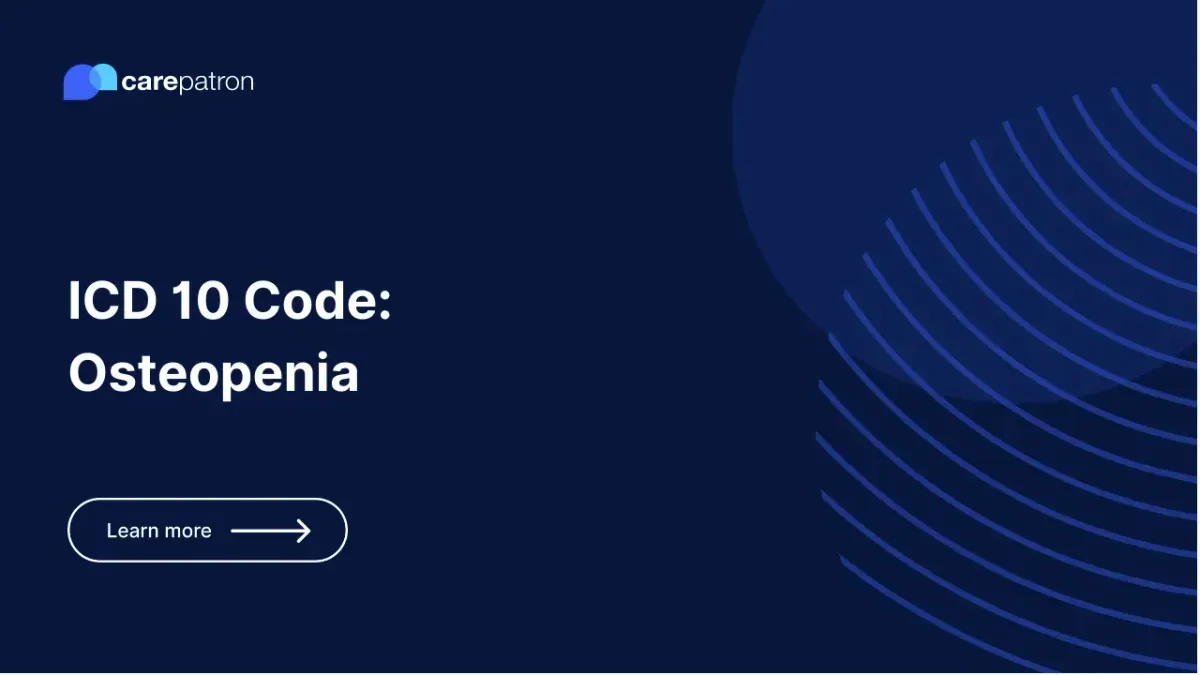
Osteopenia ICD-10-CM Codes
Learn about ICD-10-CM codes for osteopenia diagnosis and documentation through this guide.
Use Code
Commonly asked questions
The frequency of screening depends on individual risk factors and guidelines. Postmenopausal women without additional risk factors may undergo screening every 2 to 3 years, while higher-risk individuals may require more frequent screenings.
If osteopenia is detected, clinical management strategies focus on lifestyle modifications, including exercise, calcium and vitamin D supplementation, smoking cessation, and fall prevention. In some cases, pharmacological interventions may be necessary.
Yes, regular follow-up with bone density testing is important to assess the response to interventions and monitor the progression of bone density over time. ICD codes related to osteopenia can be used to document subsequent encounters and monitoring.
EHR and practice management software
Get started for free
*No credit card required
Free
$0/usd
Unlimited clients
Telehealth
1GB of storage
Client portal text
Automated billing and online payments
